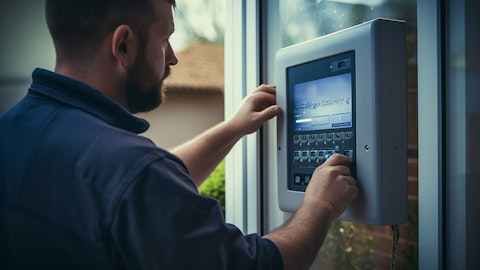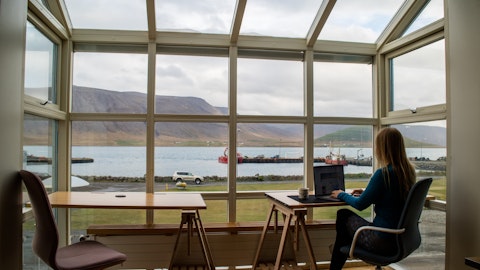At the same time, we’re driving new growth is a recipe for profitability.
Sidney Ho: Great. Thank you very much.
Lucas Haldeman : Thanks, Sidney.
Operator: Our next question comes from Brett Knoblauch from Cantor Fitzgerald. Your line is…
Brett Knoblauch : Perfect. Hi, Lucas. Hi, Hiroshi. Thanks for taking my question. Maybe if we look at SaaS ARPU, it was a nice kind of sequential growth there. Could you maybe go into the drivers behind that? More specifically into your existing deployment base. What new products were they taking up in the quarter? Have you been more focused on kind of upselling then? Obviously, relative to the new units deployed. So I’m curious to what products you’re seeing really drive the improvement in SaaS ARPU.
Lucas Haldeman : Hey, Brett, yes, thanks for the question. So I think it’s a good question. I think we’re seeing a lot of customers adding additional products Access Control and self-guided tour are the two that come to mind as really a package IoT Access Control and self-guided tour. That helps owners unlock savings and efficiencies in labor and really with the macro backdrop that I took in the first question from Nikhil, that’s become a real focus. And so we’re having a lot of success saying hey to be able to save on labor costs these three products work in harmony together. And you’re seeing that come out in the ARPU. All three of those help drive ARPU growth.
Brett Knoblauch : Perfect. And then maybe a question for Hiroshi on professional services. Obviously, with the changes you’re making in that segment revenue decline this quarter. How should we think directionally about professional services revenue in the fourth quarter and maybe as we look at 2024? Should we expect that revenue to be down next year?
Hiroshi Okamoto : I think in terms of revenues, for professional services for Q4 would probably be similar to Q3. And Q4 2024, we haven’t given guidance yet, but we think it will be slightly up.
Lucas Haldeman: Yes. And I think just — I’d like to just point you Brett, towards really — professional services will vary based on, new unit deployment and that it’s sort of is what it is. The way we feel internally is once that’s breakeven or slightly positive, it’s less of a focus overall on the company and that’s where you’ll see — we have intentionally said we’re not going to grow units — as new units as quickly, as we have in the past because we are focusing on cross-sell upsell profitability. And so it’s less of an internal barometer than it once was for us.
Brett Knoblauch : Understood. Appreciate it guys. Congrats on the quarter.
Lucas Haldeman: Thanks, Brett
Operator: Our next question comes from Tom White from DA Davidson & Co. Your line is now open.
Q – Tom White: Thanks for taking the question. I’m not sure, if I heard an update on WiFi in the prepared remarks. I realize it’s still early and it’s going to be longer, in sales segment. But just curious, how you guys see traction there? And then just secondarily on the new integrated hub, I miss that. Can you just maybe talk a little bit more about sort of how that might impact the financial model over the coming quarters? Is it a revenue opportunity? Is it about unlocking additional efficiencies for customers in that kind of [indiscernible]?
Lucas Haldeman: Yes, update on WiFi, again we think that WiFi really becomes a driver of significant revenue in 2025, but we remain really enthusiastic about the demand we’re seeing for that product. We have a tremendous number of quotes that we’ve been generating, active jobs that we’re working and still feel like that’s going to be a very important piece of our platform going forward. We were just — actually one of our NMHC, National Multi-Housing Council shows, and I was with a lot of customers and it’s top of everyone’s mind, not just our WiFi product but WiFi in general. So I know, it’s an exciting time for this industry and I think we’re going to capitalize on that. In terms of the new ALLOY HUB PLUS, the new integrated hub there’s not a material difference in top line revenue, but there’ll be a pickup in gross margin because instead of installing a third-party thermostat where we’re a distributor of hardware that — the hub is something we’re making.


